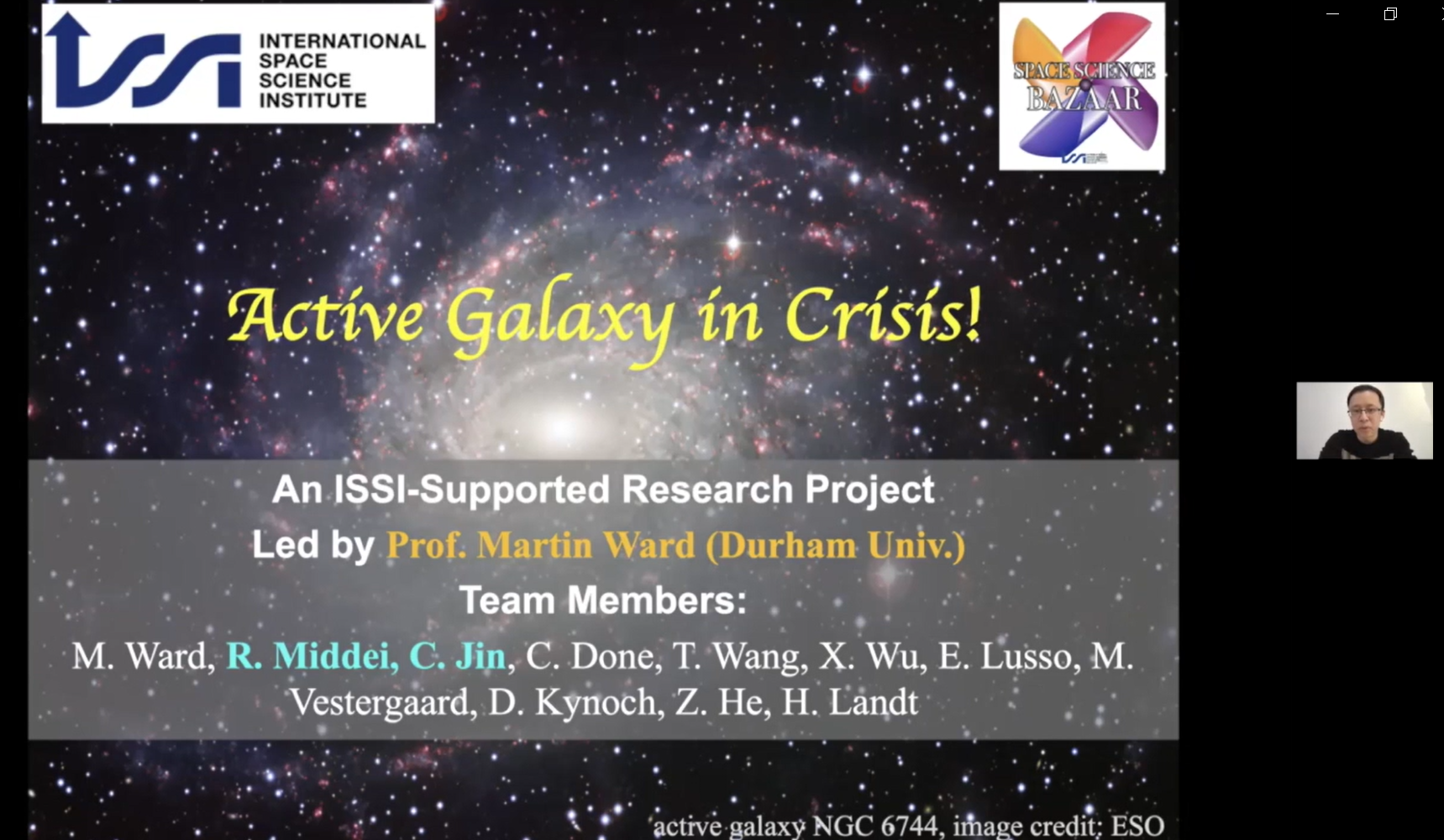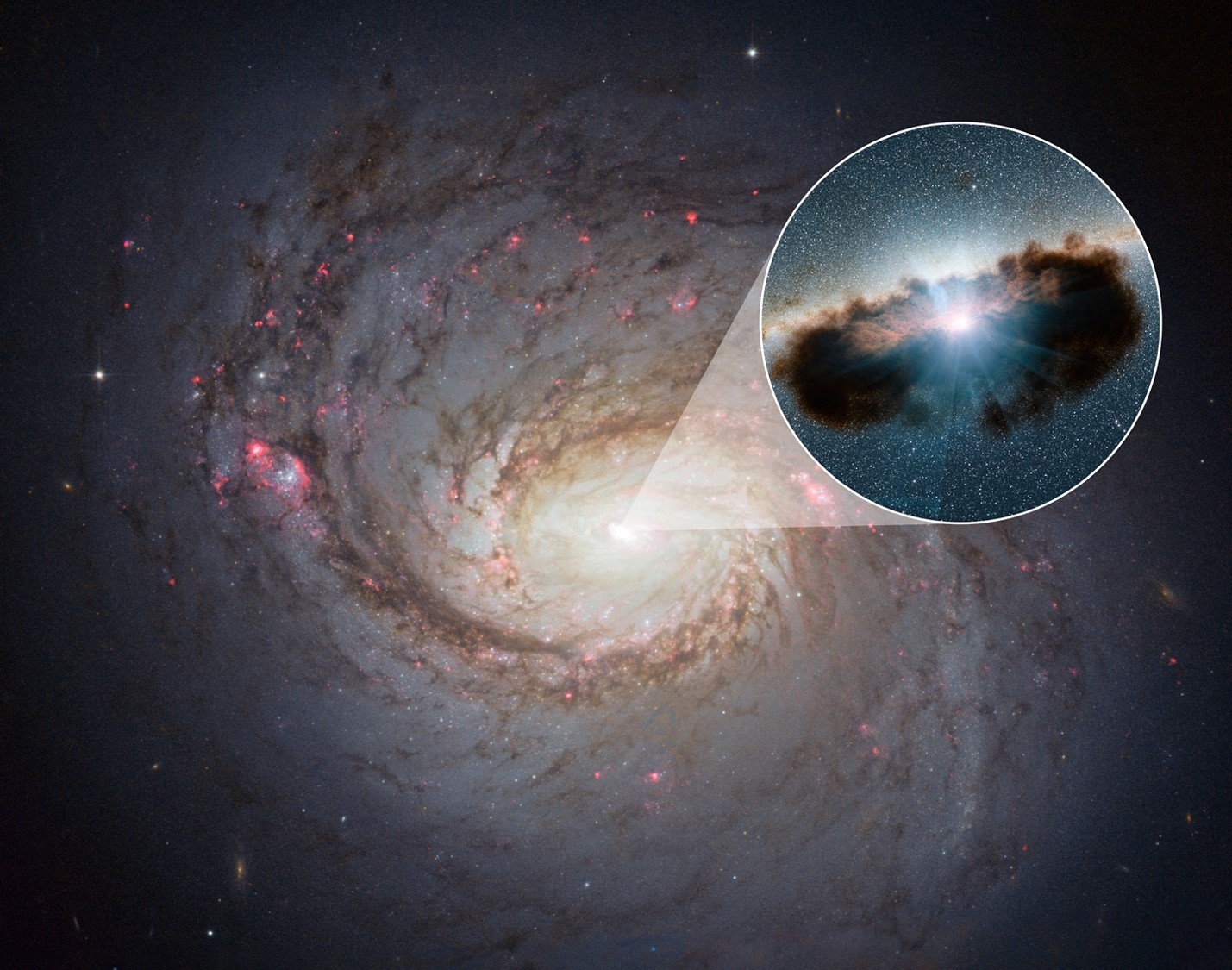Watch: Active Galaxies in Crisis: A Statistical Study of Ultra-Violet Variability with Dr. Chichuan Jin and Dr. Riccardo Middei| Space Science Bazaar
On 2 December 2021, Prof. JIN Chichuan and Prof. Riccardo Middei gave an online seminar on Active Galaxies in Crisis: A Statistical Study of Ultra-Violet Variability. The lecture was organized in the context of the ISSI-BJ "Space Science Bazaar" series that young scientists present their work within International Team Program of ISSI-BJ.


The compact central regions of some galaxies emit very powerful energy across the whole of the electromagnetic spectrum, ranging from the radio to gamma rays. These are called active galactic nuclei (AGN). The primary energy source is gravitational, produced as gas spirals in towards a central supermassive black hole, from millions up to billions of solar masses. As it does so it becomes extremely hot and radiates until it vanishes across the event horizon of the black hole. Although this general picture is now accepted there are still many important outstanding questions still to be answered such as: what happens in the inner regions of the disc of accreting material? What causes some AGN to exhibit outflowing winds and jets as well as the inflow of material onto the black hole? Why do some AGN change their rate of mass accretion dramatically, so that their observational properties radically change as a result?
These and other questions are the subject of an ISSI supported project titled “AGN in Crisis”. We will discuss the objectives of the project and describe how X-ray satellite data-bases, notably XMM-Newton and Swift, can be used to make progresses. Specifically the simultaneous X-ray and ultraviolet data provided by these satellites, together with the astrophysics derived from the optical emission lines obtained via ground-based spectroscopy can be used to assemble a spectral energy distribution (SED). These SEDs can then be modelled by applying state-of-the-art accretion disc models to examine which parameters are key in determining the state of accretion and to explain their observational properties.
About Dr. Chichuan Jin and Dr. Riccardo Middei


